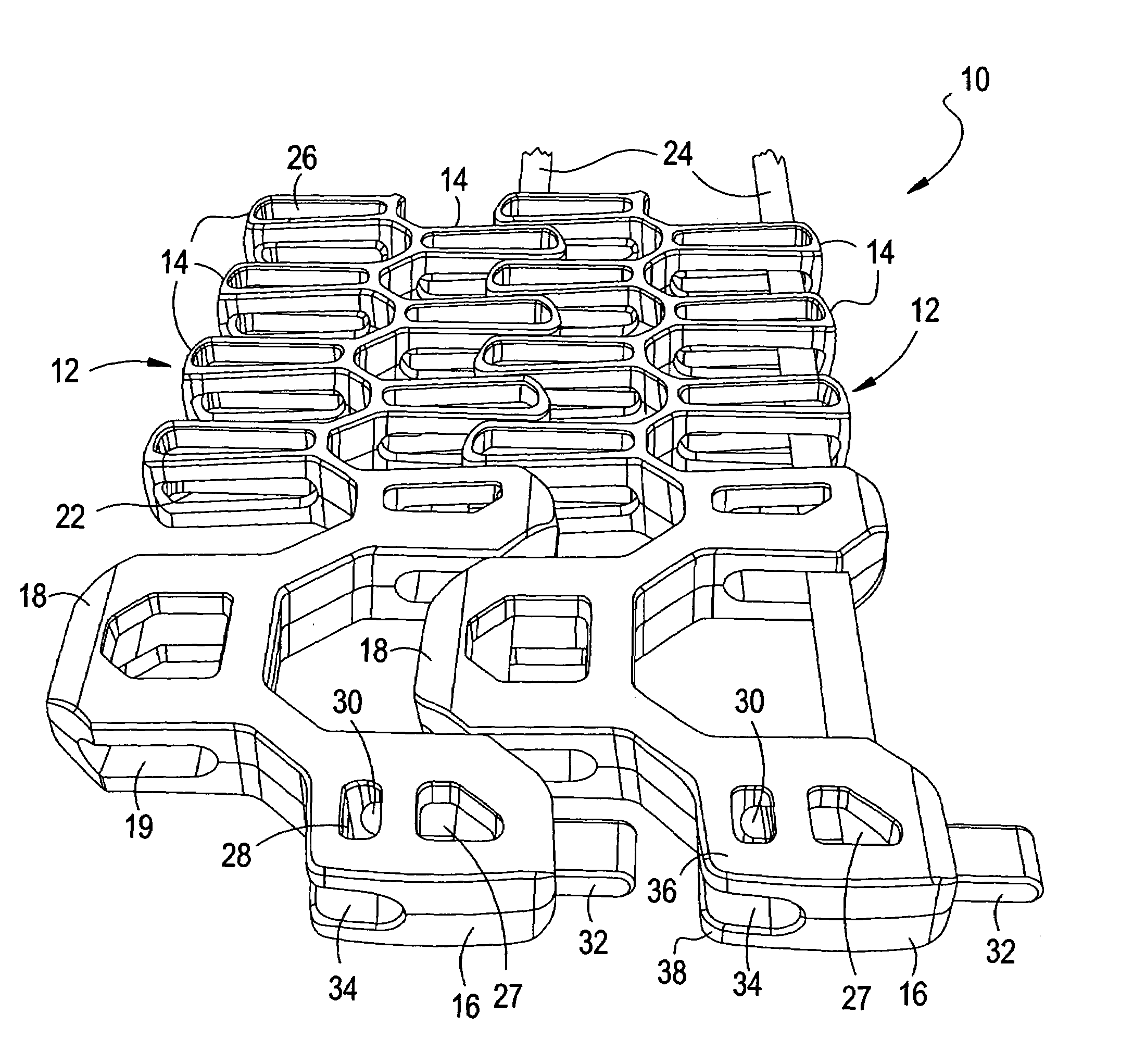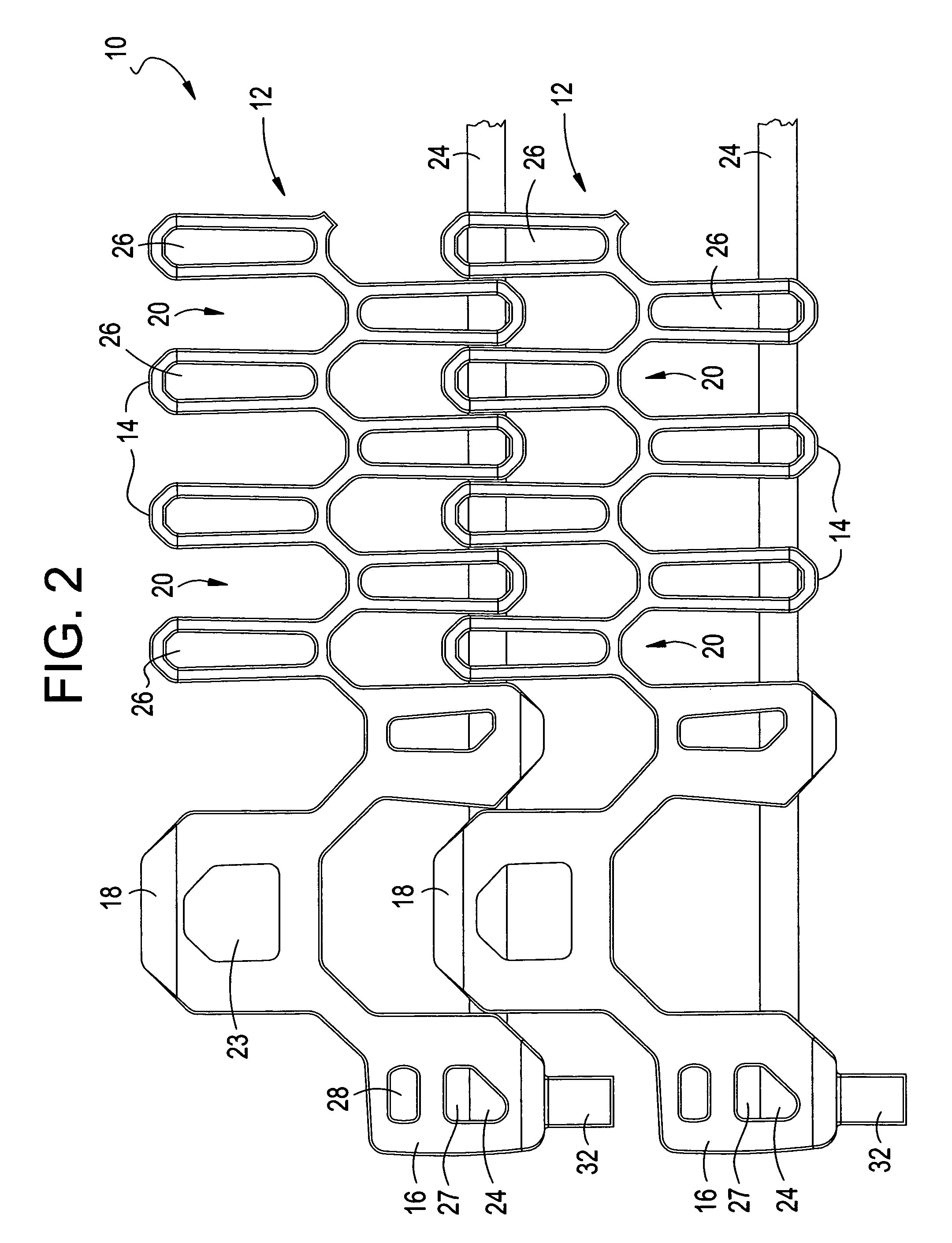Conveyor belt and method of assembly
a technology of conveyor belts and pivot rods, applied in the field of modular conveyor belts, can solve the problems of inability to adjust the angle of the pivot rod, so as to reduce the likelihood of tenting during operation
- Summary
- Abstract
- Description
- Claims
- Application Information
AI Technical Summary
Benefits of technology
Problems solved by technology
Method used
Image
Examples
Embodiment Construction
[0040]FIGS. 1 to 7 show various views of a segment of a conveyor belt 10 in accordance with one example embodiment of the present invention which provides an integrated solution to various issues noted previously that is associated with using conveyor belts. As will be described in detail herein below, the conveyor belt 10 allows for easy installation and retention of pivot rods which are used to interconnect a plurality of link elements as described. In addition, conveyor belt 10 as illustrated reduces the likelihood of tenting, and further provides a mechanism for controlling the minimum turn radius of the conveyor belt 10. Various aspects of the present invention, and the advantages thereof, are described herein below in reference to the various figures, especially with respect to FIGS. 1 to 7. However, it should be understood that these figures merely show particular embodiments of the present invention, and that the present invention is not limited to the specific embodiments s...
PUM
 Login to View More
Login to View More Abstract
Description
Claims
Application Information
 Login to View More
Login to View More - R&D
- Intellectual Property
- Life Sciences
- Materials
- Tech Scout
- Unparalleled Data Quality
- Higher Quality Content
- 60% Fewer Hallucinations
Browse by: Latest US Patents, China's latest patents, Technical Efficacy Thesaurus, Application Domain, Technology Topic, Popular Technical Reports.
© 2025 PatSnap. All rights reserved.Legal|Privacy policy|Modern Slavery Act Transparency Statement|Sitemap|About US| Contact US: help@patsnap.com



